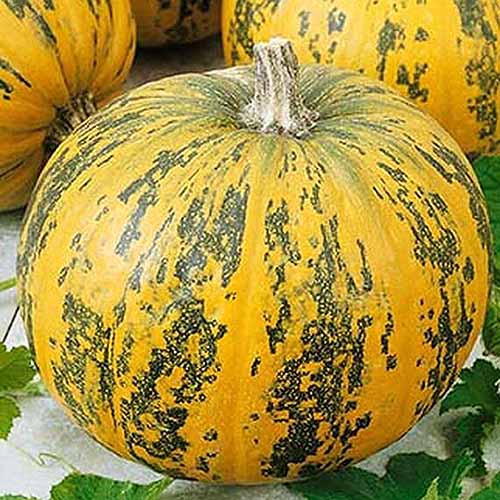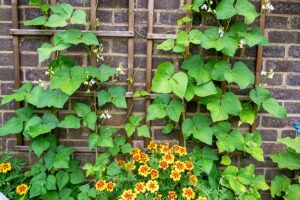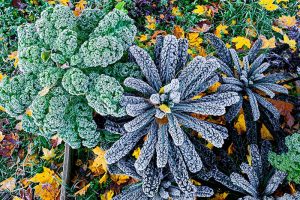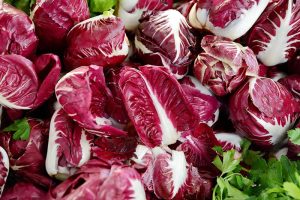When I think of fall, pumpkins automatically come to mind. Or, to be more specific, pumpkin pie, cake, rolls, and lattes…
But what about all of the seeds that are left over after carving jack-o’-lanterns and baking cinnamon-scented fall treats?
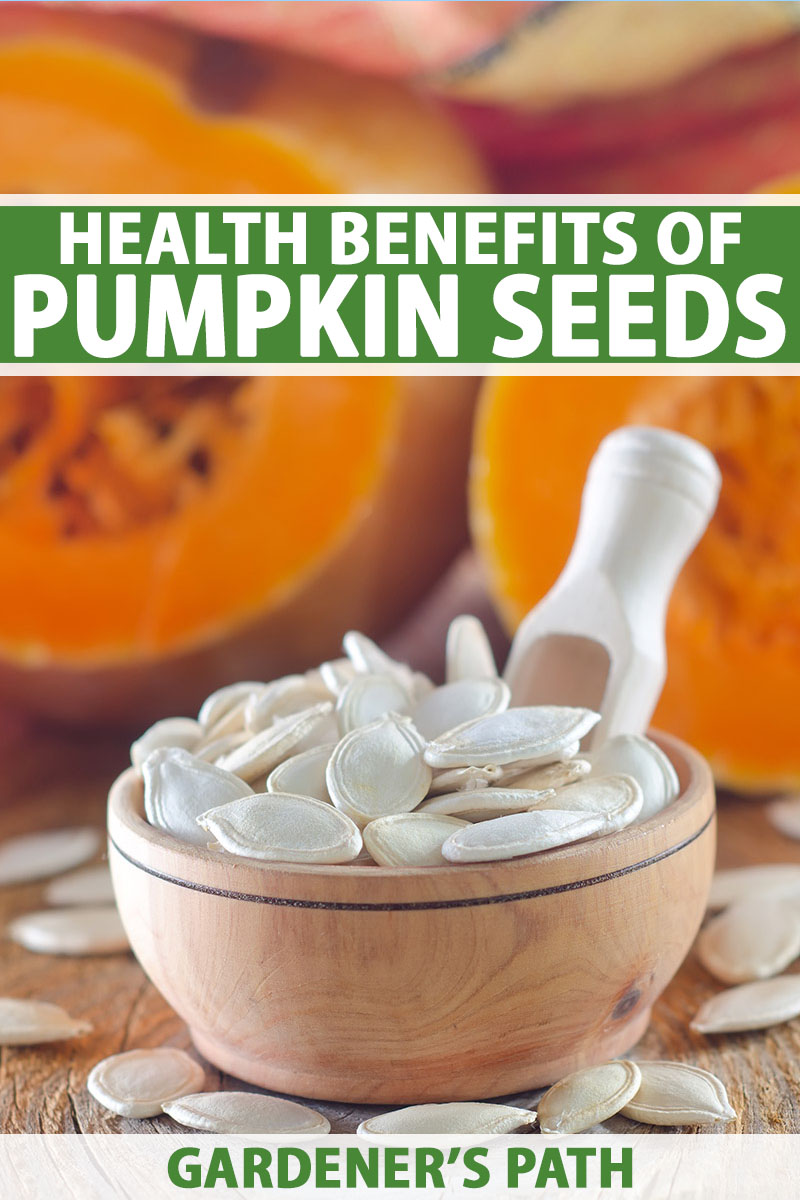
We link to vendors to help you find relevant products. If you buy from one of our links, we may earn a commission.
I’ll give you the scoop on pumpkin seed nutrition and why you shouldn’t toss those innards from your homegrown crop!
What You’ll Learn
Pumpkin Seed Nutrition
Homemade roasted pumpkin seeds make a great snack, as do unsalted store-bought ones. They’re crunchy, flavorful, and offer a surprising amount of nutritional perks.
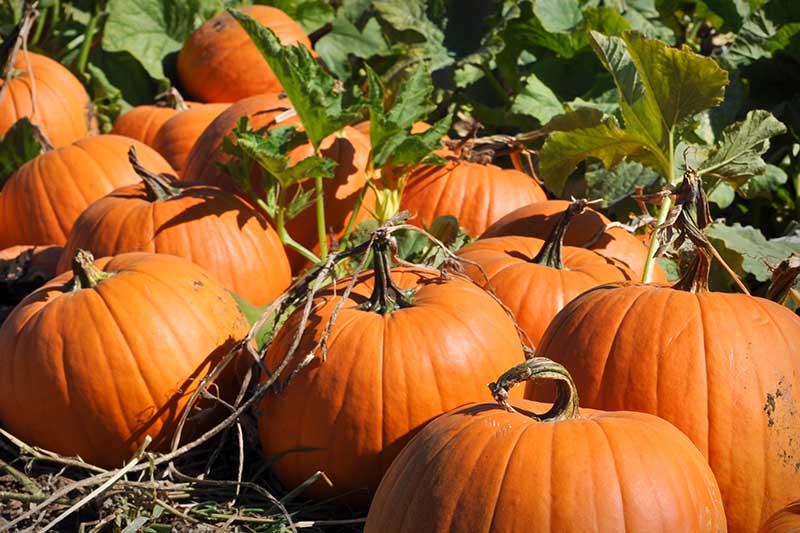
A one-ounce serving of whole roasted, unsalted pumpkin seeds (eaten with the shells on) provides 126 calories, 5 grams of protein, 5.5 grams of fat, and 15 grams of carbohydrates.
Because they come from a plant, the fats they provide are healthier unsaturated fats as opposed to the less healthy saturated fats that come from animal sources, which are solid at room temperature.
Additionally, a serving of whole roasted pumpkin seeds provides 5 grams of dietary fiber, 20 percent of the recommended daily intake for healthy adults of magnesium, and 8 percent of the recommended daily amount of potassium.
A serving will also satisfy 25 percent of your recommended daily zinc needs, and 7 percent of your recommended daily iron intake.
Note that these percentages are based on an average of the recommended daily intake values for healthy adult males and females between the ages of 18 and 59.
They can be removed from the shells and enjoyed as well, and are sometimes sold in stores this way.
On the other hand, ‘Pepita,’ a hybrid cultivar grows without a shell.
You can add ‘Pepita’ to your garden with seeds available at Burpee.
Hull-less seeds still offer significant nutrition, but most of the beneficial fiber is found in the shells.
Health Perks and Benefits
With significant amounts of healthy fats and fiber, they make a surprisingly filling snack. Fat and fiber both stay in the digestive tract longer than carbs, helping you to feel full more quickly and stay full for longer.
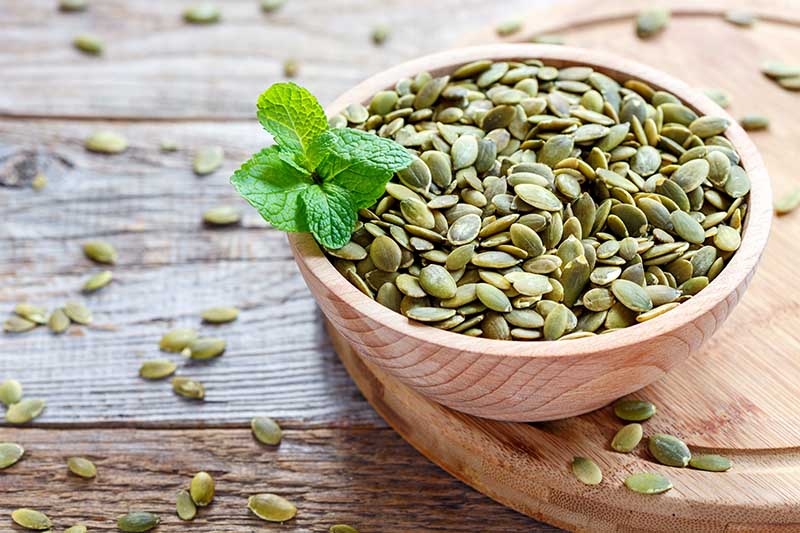
Fiber also helps to keep digestion regular, and can help to prevent blood sugar spikes. With 5.5 grams per serving, pumpkin seeds in their shells meet about 20 percent of the recommended daily intake of dietary fiber.
The high amounts of magnesium found in these healthy seeds support your body in converting food to usable energy and support bone density, as well as brain functions including learning and memory.
They are also high in zinc, an important trace mineral. Zinc plays a structural role in many types of proteins and enzymes found in the body. It is also present in the nucleus of cells, where it works to stabilize DNA and RNA.
Zinc can help to increase bone mass and prevent the deterioration of our eyes, which is also known as age-related macular degeneration.
Lastly, the small amount of iron that this healthy snack contains also contributes to your daily needs, as part of a balanced diet. Iron is a key component of the hemoglobin in our blood, which helps transport oxygen throughout the body.
Iron from animal-based sources (what is known as heme iron) is more easily absorbed by the body, but plant-based sources also offer benefits.
To improve your iron absorption, pair iron-rich plant-based foods like this one with foods that are high in vitamin C, like tomatoes or citrus fruit.
Preparing and Roasting the Seeds
After taking the time to carefully scrape out your newly-harvested pumpkin, you don’t want to let all of that hard work go to waste! Luckily, preparing the seeds for eating is very simple.
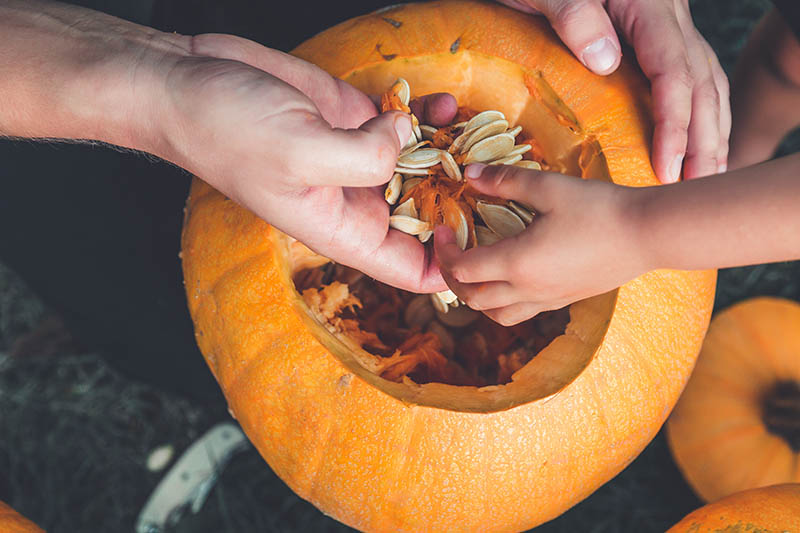
To roast them, start by separating them from the stringy flesh with your hands. Let the seeds soak in some water to remove any remaining bits of flesh, and then rinse and drain them in a colander.
The flesh is safe to eat, so if some small pieces remain, it’s not a big deal.
While you’re doing this prep work, preheat your oven to 275°F.
When they are clean, toss them lightly with oil, and some salt if desired. Sodium is part of a healthy diet, but keep in mind that the recommended daily intake is 1,500 milligrams.
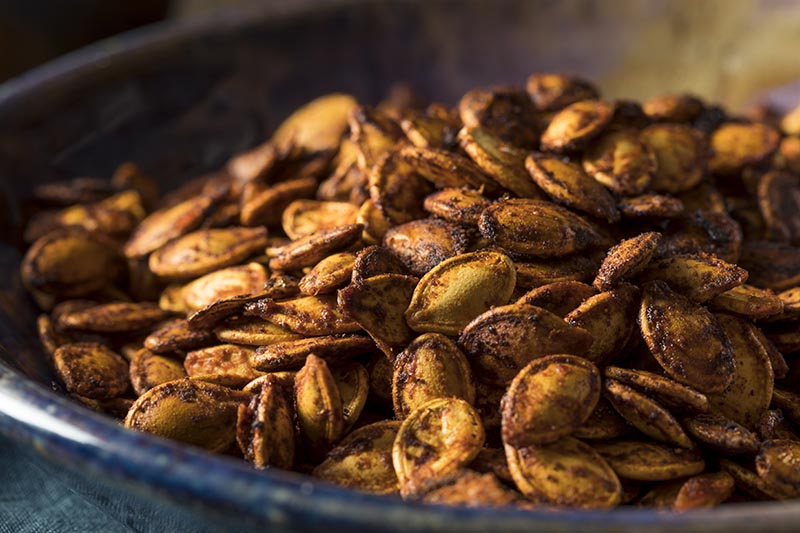
You can get creative and add a variety of seasonings of your choice instead, like herbs and spices, if you want to cut back on added sodium!
Finally, spread your seeds out evenly on a baking sheet and bake for 40-45 minutes, mixing them halfway through to promote even cooking.
You’ll know that they’re done when they’re golden brown. Be sure to keep an eye on them to prevent burning!
For more detailed instructions and a variety of suggested seasoning options, check out this recipe from our sister site, Foodal.
Once they have cooled, it’s time to eat!
Super Seeds
For such a tiny food, these seeds offer a tremendous amount of benefit in terms of our health.
Not only can you reduce your pumpkin waste by eating the seeds, you can create an easy, filling, and nutritious snack right in your own oven!
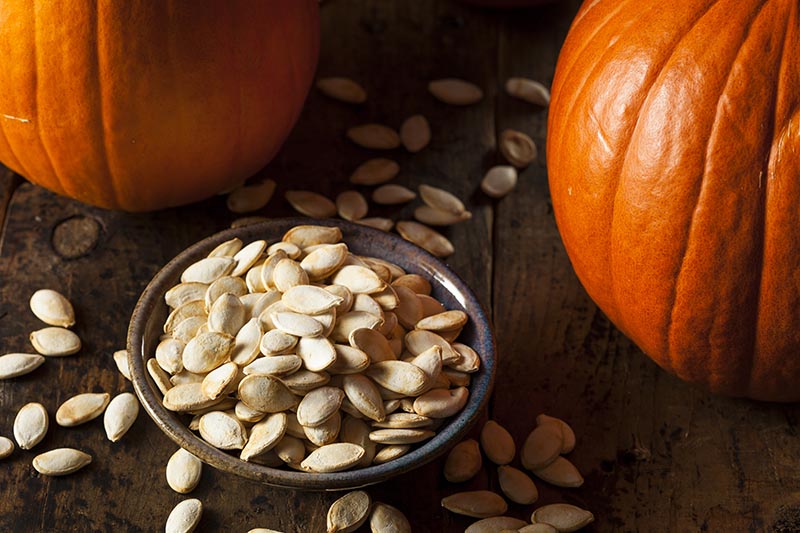
Eat these on their own, or try sprinkling them on top of a salad for a unique crunch.
Do you save your seeds when you’re working with fresh pumpkins? Leave a comment to let me know your favorite way to prepare pumpkin seeds!
For more information about growing pumpkins and selecting cultivars, try one of these articles next:
- How to Save Pumpkin Seeds to Plant in Your Garden
- 11 of the Best Pumpkin Varieties for Cooking
- How to Grow Your Own Pumpkins
- 11 of the Best Pumpkins to Grow for Pies, Puree, and Other Treats
© Ask the Experts, LLC. ALL RIGHTS RESERVED. See our TOS for more details. Product photo via Burpee. Uncredited photos: Shutterstock.
The contents of this article have been reviewed and verified by a registered dietitian for informational purposes only. This article should not be construed as personalized or professional medical advice. Gardener’s Path and Ask the Experts, LLC assume no liability for the use or misuse of the material presented above. Always consult with a medical professional before changing your diet, or using supplements or manufactured or natural medications.

